If you’d like to make energy upgrades to your home, you might want to do it now while you can still take advantage of the Inflation Reduction Act (IRA) tax credits and incentives. Although the president-elect derides the IRA as a “green new scam,” and wants to repeal it, money has already been disbursed to many states so grabbing back that cash may prove difficult. Then again, we live in unprecedented times.
Whatever happens with the future of the IRA, you may be eligible for other rebates. We received local rebates for two of our upgrades. And you’ll benefit not only monetarily from energy upgrades. Efficient electric appliances increase the comfort of your home, improve indoor air quality, generate fewer emissions (which benefits everyone) and more.
Before you start
Research rebates. Look into the IRA rebates and incentives. Contact your state energy office and ask about programs. Reach out to your utility provider as well. Smart contractors stay up to date on rebates. You may have to apply for certain rebates before starting any work. (The Canadian government also offers energy rebates and loans. You’ll need an energy audit before beginning any upgrades.)
Find a contractor. We found ours through referrals from friends and neighbors.
Take pictures of your existing systems. You’ll need these for most rebates.
Save all your receipts for the work. You’ll need to submit these.
Take pictures of your new systems. Rebate programs require after shots.
What we’ve done so far
Induction-electric range
When we had our new range installed, the IRA had not yet kicked in for induction. But we received a $250 induction rebate from a local program. I love, love, love my induction cooktop and will never go back to gas. It is efficient, fast and responsive, easy to clean and emits no fumes. As an award-winning cookbook author, I do know something about food.
To replace a gas range with an induction-electric range, you’ll need to find:
A plumber to cap the gas
If necessary, an electrician to install a 220V outlet and an upgrade to your electrical panel
A drywaller and painter to repair the hole the plumber made in the wall to cap the gas (we did this ourselves)
You may not be ready to take the plunge. For a couple of years before we broke up with our gas range, I used a portable induction cooktop. Occasionally I’d have to turn on an extra burner on the gas stove but usually the single induction element sufficed. I still use this for all of my in-person and online classes. (I bought this model.)
A few libraries in my area lend out portable induction cooktops for residents to test drive. If you are a PG&E customer in California, you may be able to borrow one through its Induction Cooktop Loaner Program. Or search here for cooktop lending programs in other areas of California. (This post is a bit Northern California-centric because I can’t possibly research programs in every state and region.) Check your library or utility for similar programs.

Go here to read all the details on our switch from a gas range to induction-electric. I wrote what I wish I had known before we started. (And go here for a pile of tips to reduce energy in the kitchen.)
Heat pump
We received a local $2,500 rebate from Silicon Valley Clean Energy and a state-wide $1,000 TECH rebate. Our heat pump didn’t qualify for an IRA rebate. The difference in price between our model and the IRA-eligible model exceeded the rebate amount. The smaller model we installed works well in our small-by-today’s-standards home. And it still made financial sense. Our gas furnace, likely original (circa 1954) had been on its last legs for years. We didn’t want it to fail in the middle of winter (it does get cold here).
Before our HVAC contractor could get started, we had to have asbestos removed from our system. While we left for the day, workers removed the asbestos-wrapped ducts while donning their hazmat suits. They then sealed up the furnace door, attic and duct openings.
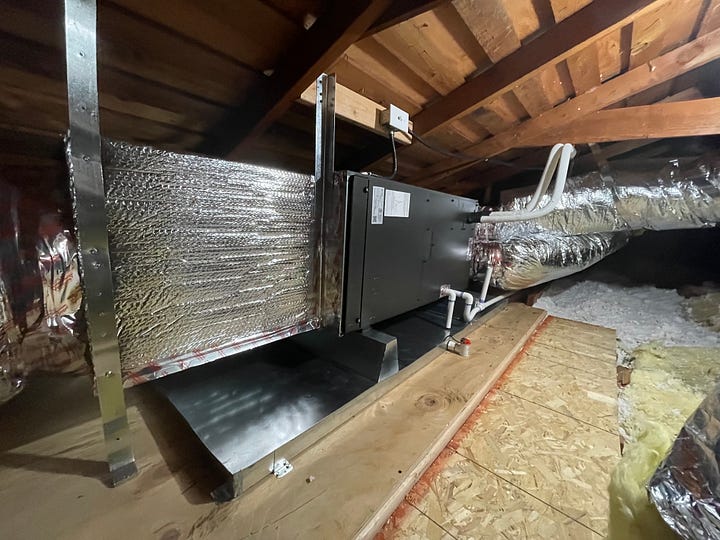
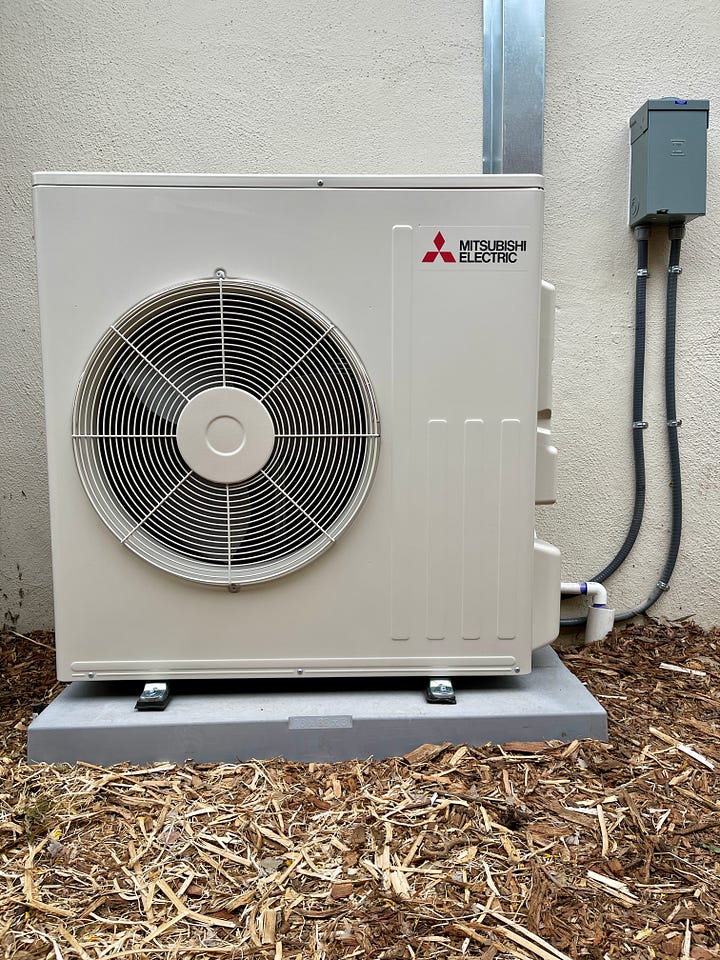
Our contractor installed the heat pump in mid-September. I told him that the timing worked well—we’d have heat just in time for the colder weather. Turns out, the heat pump arrived just in time for a record-smashing, brutal October heat wave (heat pumps also cool homes). We had never had A/C and were very grateful for it that week.
Rooftop solar panels
Solar panels produce energy and send it out to the grid. Homeowners then draw and pay for energy from the grid when they need it. We installed rooftop solar just in time (early 2023) to be grandfathered into California’s net metering program NEM2.
With NEM2, investor-owned PG&E pays us retail prices for the energy we produce. With NEM3, which replaced NEM2, homeowners receive the wholesale price, about 75 percent less, for the energy they produce. In other words, NEM3 slashed incentives for new rooftop solar installations. However, under NEM3, if you install solar plus (pricey) batteries, you can draw on that power you produced or sell it back to your utility during peak hours for a higher price, improving your return on investment. (Read more about net metering in California here.)
Through the IRA, we received a 30 percent tax credit for our panels—a huge incentive. The panels and efficient electric upgrades have slashed our yearly $2,000 energy bill to basically zero, except for some monthly mandatory fees (keep in mind, we’re on NEM2). So our panels will pay for themselves in about five more years (six years total), given current rates. With PG&E’s constant price hikes, they will pay for themselves in less time than that.
Regardless of generous or stingy net metering and the future of IRA incentives, rooftop solar does save money while it reduces our dependency on burning fossil fuels, mitigating climate change and pollution.
What I’d like to get done next
We had our attic insulated to the brim several years ago but our outer walls appear to contain nothing but cold air. I’d love to get them filled. In the below pic, an old house in Ontario, Canada, has undergone drill-and-fill insulation. In Ontario (check your province here), if you qualify, the rebates for insulation can cover a generous portion of the cost. Insulating an attic may pay for itself, for example.
The least expensive energy upgrade of all
Hanging clothes outside to dry on a line not only leaves them smelling fresh and extends their life, it also serves as a small act of defiance. Utilities may be working on it, but they haven’t yet figured out how to charge us for harnessing the sun directly to dry our underwear.
Sourdough starter class!
Saturday, January 4th, 10am PT/1pm ET. Only $9 per person! (Or per device. Have as many people sitting in front of your screen as you like.) Makes a great zero-waste gift for the bakers on your list! Go here to register.

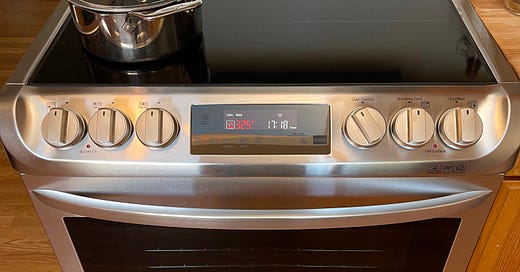



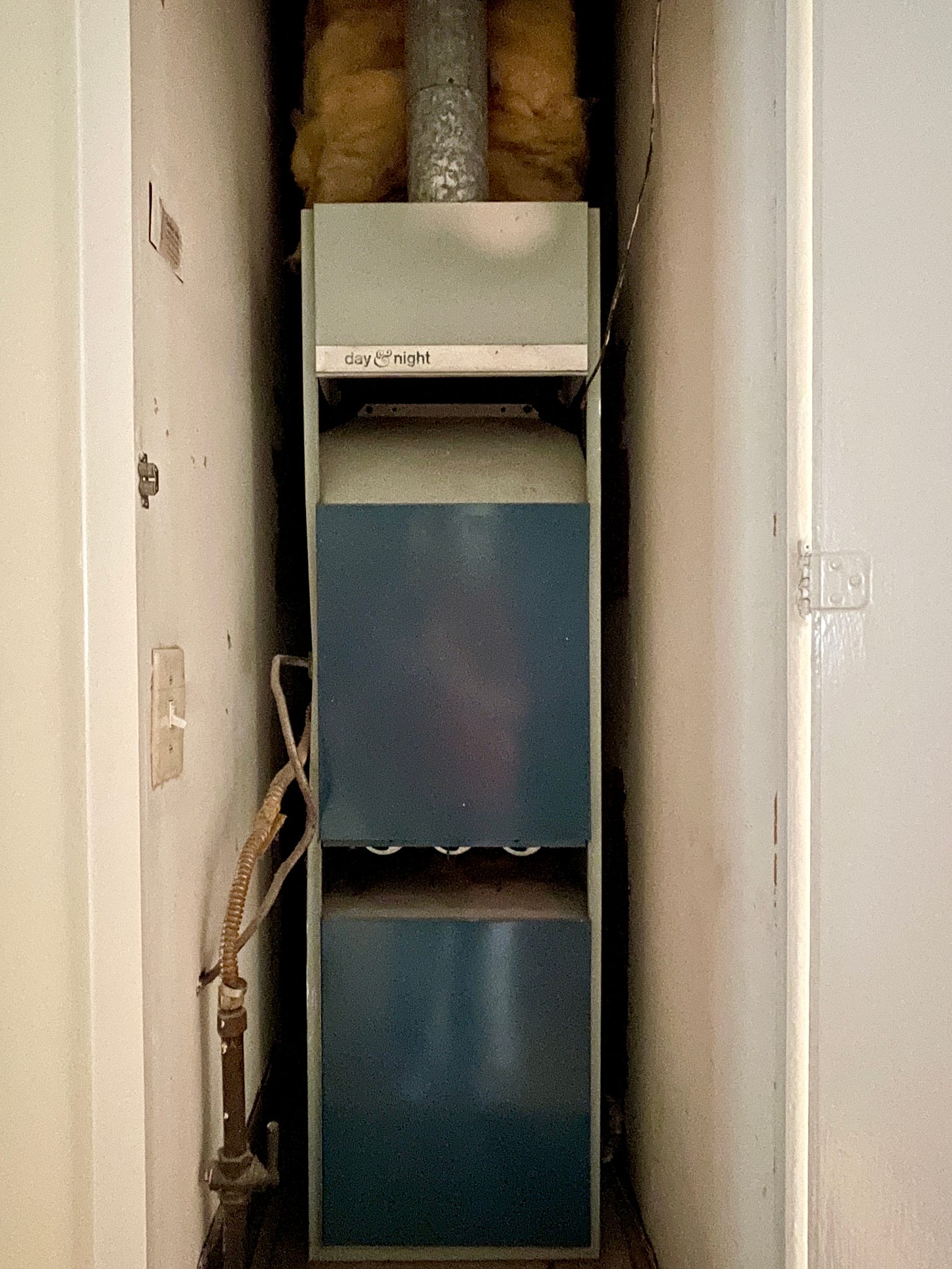
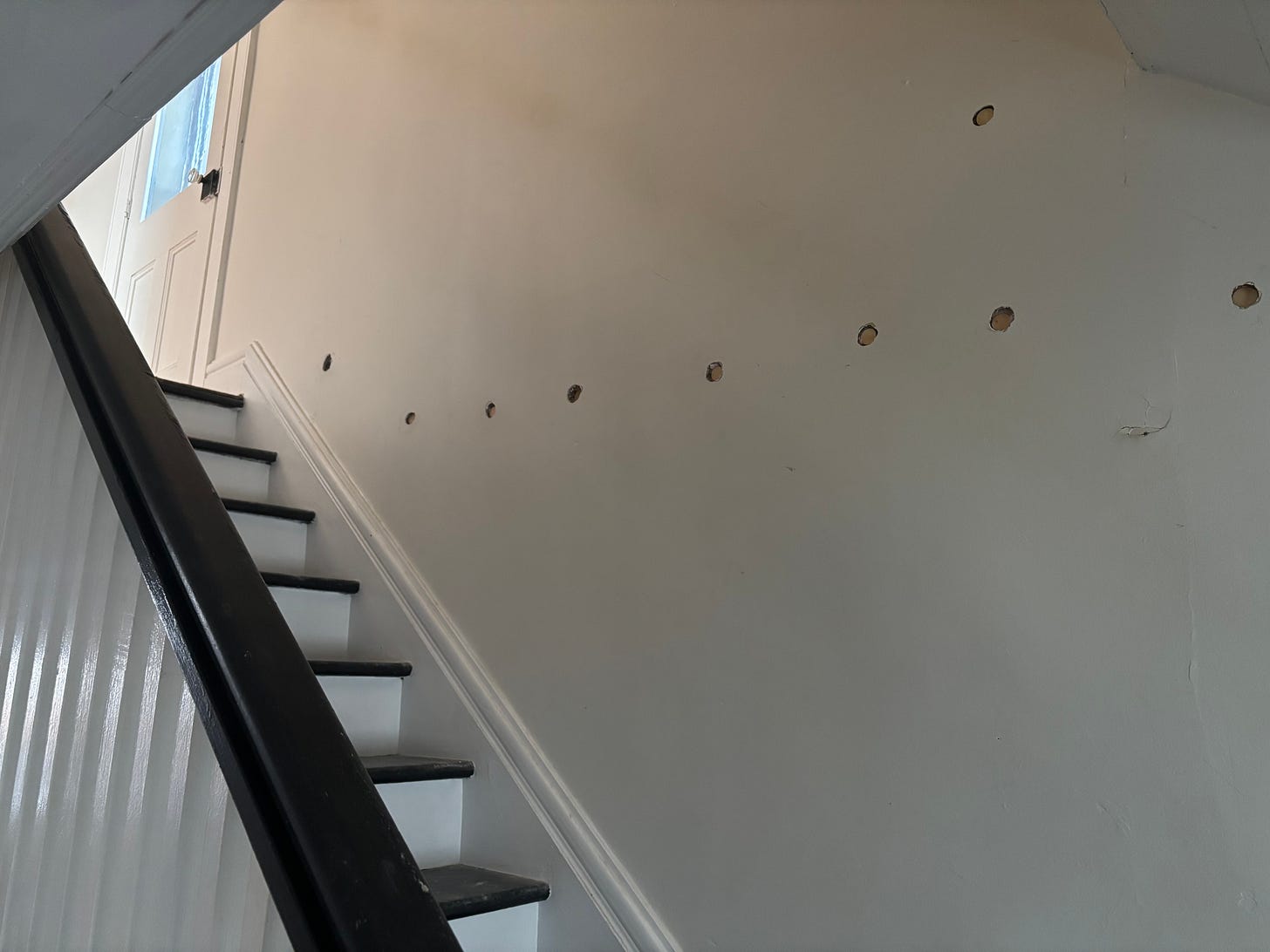


My only problem with electric stovetop and ovens is that everything burns so easily. I'm so used to a gas stove/oven. We have a electric now since we moved. With gas you can turn it down and it changes instantly with electric it takes so long to change temp.
Thanks for this great article! As a (former) longtime restaurateur who cooked exclusively with induction at work, I lobbied hard for years to make the switch at home from 36” gas range to 36” Bosch induction range. Though they were skeptical, the entire multigenerational family LOVES it, as do all our friends who ooo and ahhh over it when visiting. Preaching to the choir, I know, but I wanted to chime in and affirm how great it is. No indoor gas pollution, lower utilities, incredible speed and accuracy on the top, the oven is a dream (making baking a joy once again), SO easy to clean. I’m a happy homemaker, indeed 😂